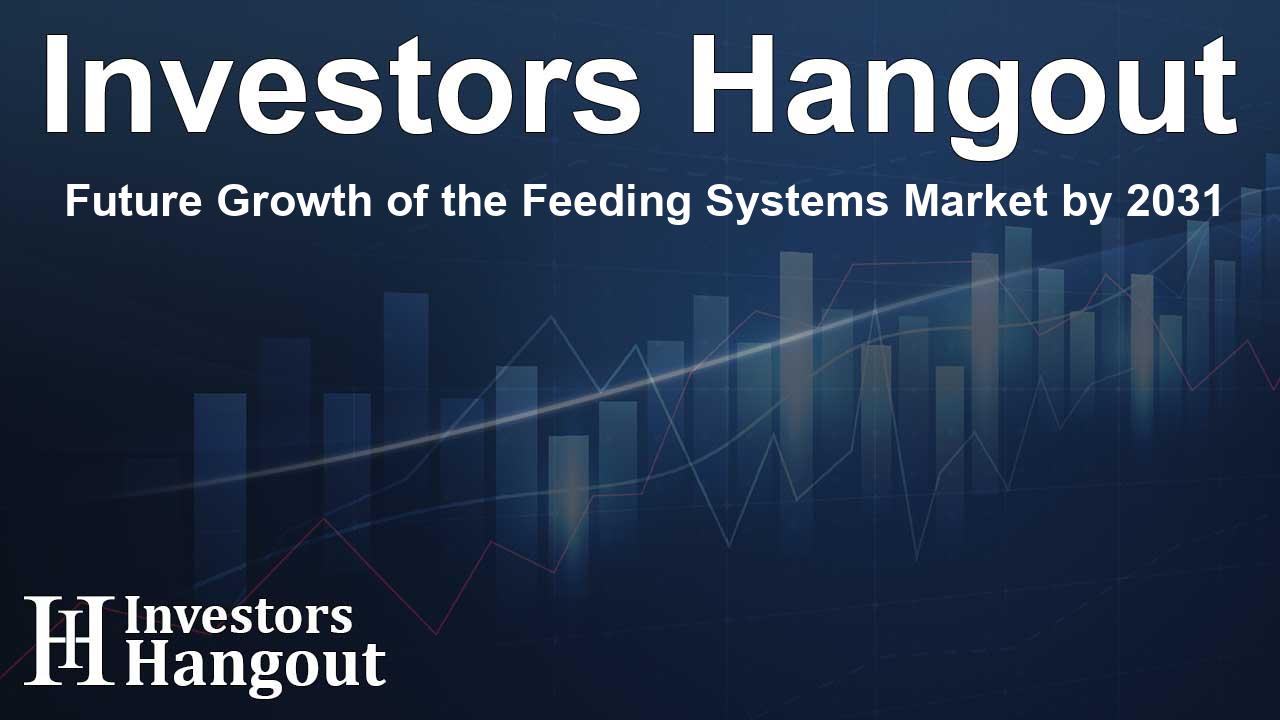Future Growth of the Feeding Systems Market by 2031

Future Growth of the Feeding Systems Market by 2031
The Feeding Systems Market is set to experience remarkable growth in the coming years, with expectations to generate a revenue of approximately USD 2.96 Billion by the end of the forecast period. This growth is projected at a robust compound annual growth rate (CAGR) of 10.10% from 2024 to 2031. The market's expansion is driven by a surge in demand for automation in livestock management and an increased focus on the health and productivity of animals.
Market Overview and Key Drivers
Emerging technologies and innovations are at the forefront of this growth. The primary factors contributing to the market's expansion include rising livestock productivity demands, technological advancements in precision feeding systems, and growing concerns about labor shortages in agricultural sectors. The market shows significant potential, particularly in areas where precision farming practices are becoming increasingly prevalent.
Technological Advancements Fueling Growth
The integration of cutting-edge technologies like the Internet of Things (IoT), artificial intelligence, machine learning, and robotics has revolutionized traditional practices in livestock feeding. These new systems enable precise monitoring of feed intake, adjustments based on real-time data, and ultimately contribute to better animal health outcomes. This ensures that feed is allocated based on specific needs related to the health, age, and breed of the livestock, thereby maximizing efficiency.
Barriers to Market Adoption
While the advantages are clear, various challenges hinder the market's rapid adoption, particularly among small and medium-sized farms. High initial capital investments, ongoing maintenance costs, and complexities involved in integrating new technologies into existing systems can deter many operators. For small-scale producers, these costs pose significant barriers that can take several years to offset through increased productivity.
Geographical Trends and Market Dynamics
Geographically, the market is dominated by regions that have embraced precision livestock farming early. Key areas include various nations noted for their strong dairy and poultry industries, which have successfully integrated advanced feed management practices. The focus on sustainability and adherence to rigorous animal welfare standards further fuels the demand for innovative feeding solutions.
Competitive Landscape and Market Players
The Feeding Systems Market features a competitive landscape with several key players making substantial impacts. Companies specializing in feeding technology are consistently innovating, offering advanced automation solutions that meet the heightened demands of the industry. Strategic alliances and partnerships within the agritech sector are becoming increasingly important as they enhance market penetration opportunities and broaden product ranges.
Market Restraints: Considerations and Challenges
Despite the favorable market conditions, operators face numerous hurdles. High upfront costs, complexities surrounding technology integration, and the often inadequate availability of technical training in rural areas can significantly slow down the adoption of new feeding systems. Producers also need to grapple with data security concerns as feeding systems become more digitized and interconnected with online platforms.
Conclusion: Future Outlook
Looking ahead, the Feeding Systems Market is estimated to present lucrative opportunities for engagement and investment. As the global demand for reliable and efficient livestock production rises, the role of advanced feeding technologies will undoubtedly become more pronounced. Stakeholders are encouraged to maintain a proactive approach, focusing on technology adoption and market expansion strategies to stay ahead in this evolving marketplace.
Frequently Asked Questions
What is driving the growth of the Feeding Systems Market?
Key drivers include rising demands for livestock productivity, technological innovations, and the need for automation in agricultural sectors.
What challenges do producers face in adopting feeding systems?
Producers may encounter high initial costs, maintenance needs, and complexities associated with integrating advanced systems into their operations.
Which regions dominate the Feeding Systems Market?
Regions with strong dairy and poultry industries, notably in Europe, have experienced significant adoption of advanced feeding technologies.
How do technological advancements impact livestock feeding?
New technologies provide real-time monitoring and precision feeding, which enhance animal health and optimize productivity.
Who are the major players in the Feeding Systems Market?
Key players include technology manufacturers and agritech companies specializing in automation and smart farming solutions.
About The Author
Contact Lucas Young privately here. Or send an email with ATTN: Lucas Young as the subject to contact@investorshangout.com.
About Investors Hangout
Investors Hangout is a leading online stock forum for financial discussion and learning, offering a wide range of free tools and resources. It draws in traders of all levels, who exchange market knowledge, investigate trading tactics, and keep an eye on industry developments in real time. Featuring financial articles, stock message boards, quotes, charts, company profiles, and live news updates. Through cooperative learning and a wealth of informational resources, it helps users from novices creating their first portfolios to experts honing their techniques. Join Investors Hangout today: https://investorshangout.com/
The content of this article is based on factual, publicly available information and does not represent legal, financial, or investment advice. Investors Hangout does not offer financial advice, and the author is not a licensed financial advisor. Consult a qualified advisor before making any financial or investment decisions based on this article. This article should not be considered advice to purchase, sell, or hold any securities or other investments. If any of the material provided here is inaccurate, please contact us for corrections.
